Ho Chi Minh City, formerly known as Saigon, once “The Pearl of the Far East” is the second largest city in Vietnam (the largest being Hanoi). It is the most crowded city in the country with the official population of over 8 million people on the total area of over 2,095 km2. The city now comprises 19 districts and 5 suburban districts. District 1, along the Saigon River, where downtown Saigon is located, is the commercial center and contains most of the city’s monuments and landmarks. 8 km away in district 5 resides a big market or Cho Lon where Chinese community lives. With favorable weather the whole year round and the convenient access from other countries by air, by road and by sea, Ho Chi Minh city is a busy and dynamic metropolitan.
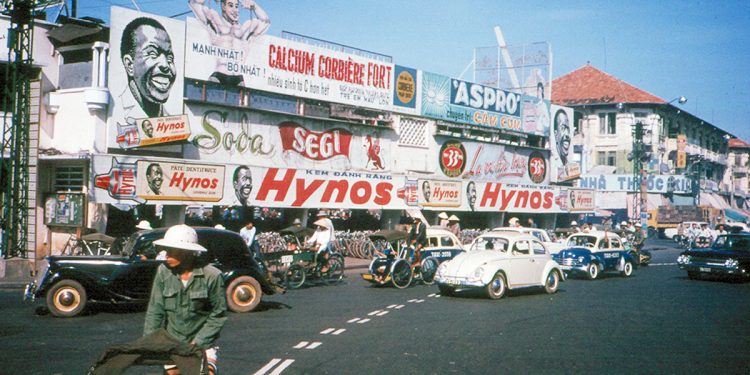
First established in 1698 and considered as an administrative unit under the Nguyen Dynasty, Saigon Gia Dinh attracted people from all over the country coming here to reclaim the land and settle. Later during the mid and late 19th century it became the principal city of Cochin China under the French rule. Then Saigon served as the capital city of South Vietnam from 1956 to 1975 till the unification of the country. Today, the city has emerged as the center of commerce, economy, education, science and technology, health care and tourism of Vietnam.
Traditionally, Vietnamese people follow the family structure of many generations in the same roof. The practice, however, becomes less popular in big cities like Ho Chi Minh City. Most families in Ho Chi Minh City are now nuclear ones with only parents living with the children. Both husbands and wives go to work, leaving their children either in kindergartens or at grandparents’ home so that grandparents can help look after their children. A lot of Vietnamese people are Buddhists or practice the philosophy of Buddhism in life. Public transport has been recently improved for people to use. However, the majority still prefers using their own vehicles, mostly motorbikes to get to work.
The economy of Ho Chi Minh City now contribute for one third of the country’s GDP. The city is fast in industrialization. The main light industries here include textiles and garments, footwear, plastics, food processing, electricity, automobiles, electronics, computers, rubber tires and mechanical products; handicrafts such as embroideries, bamboo and rattan wares, lacquer wares. Tourism also plays a very important role in the city economy. In 2017, Viet Nam received more than 3.5 million foreign tourists and more than half of that came to Ho Chi Minh City.

Vietnam in general has a fairly complete education system ranging from kindergarten to tertiary schooling levels. Children aged from 3 to 6 are encouraged to join kindergartens; those aged from 6 to 15 must go to primary and junior secondary schools on the basic of the compulsory education. After finishing these levels, they can go either to vocational schools or to senior high schools and universities for further education. Ho Chi Minh City is one of the first to complete this compulsory education among the children. Besides, there are also many international schools that provide more opportunities for students to join either locally or abroad. As for medical care system, Vietnam has a nationwide network of health care from the central and provincial to commune levels. Medical insurance is compulsory for all those who work for organization and enterprises which can cover partly or all the hospitalizing cost. The self-employed pay for voluntary medical insurance to get the same benefits or go to private hospitals or clinics
Saigon was designed during the French colonial time and built up a lot more during the American time and recently during the “doi moi” period, but quite a few French colonial-style public buildings are still there. At the intersection of Le Loi and Nguyen Hue Boulevard is the most famous Hotel de Ville (City Hall). Along Dong Khoi Street in District 1 stand such famous buildings as Notre Dame Cathedral, General Post Office, Opera House, Continental Hotel. At the waterfront, the banks, the customs houses line up looking out to the river. To preserve the old structures, the city has been planned and expanded with new modern urban areas in district 2 and district 7 to meet with the development and to house growing inhabitants. Alongside with the colonial structures, sky scrapers can be seen here and there marking the modern life of this city.
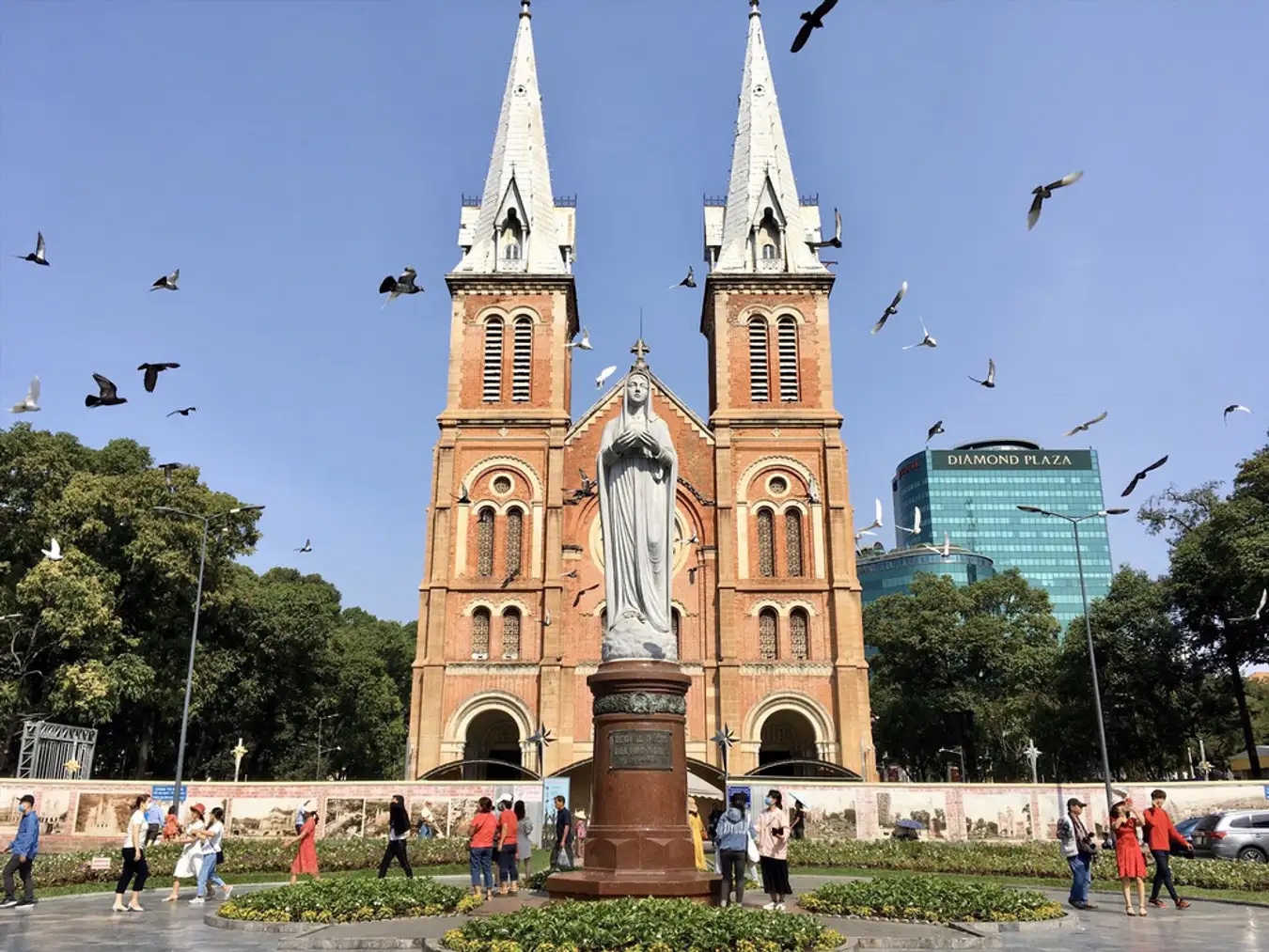
Built in 1909 and known as Hotel de Ville, the building with its ornate façade and its elegant interior lit with crystal chandeliers is one of the city ‘s most prominent landmarks and is now the office of Ho Chi Minh City People ‘s Committee.
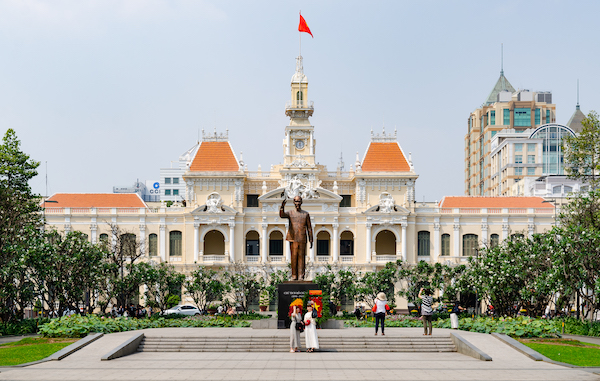
First built in 1899 as a theater for French troupes’ performances, the building then served as the seat of South Vietnamese National Assembly in the late 1950’s. The theater has been renovated in its original architecture and used for Vietnamese variety shows ranging from traditional music, orchestral performances, fashion shows to symphonies and operas.

The Cathedral was built between 1877 and 1880 on the site of the former Citadel‘s arsenal. The façade is made of red brick in the Neo-Romanesque style and is framed by two square belfries of 40 meters high. A statue of Virgin Maria with the height of 4.2 meters was erected later. You can see communion celebrated here two times a weekday and four times on Sunday.
Located on the east side of the square in front of the Cathedral, it was built between 1886 and 1891 in European style architecture with a great glass and ironwork dome. A huge mural of the map of Saigon was added at the beginning of the 20th century.
This large covered central market together with Binh Tay Market in Cholon is the largest in Saigon. Ben Thanh market was completed in 1914 at the intersection of Le Loi, Ham Nghi and Tran Hung Dao Boulevards. All kinds of products and services are available here every day from 06:00 A.M. to 06:00 P.M. Night market is on both sides of the market, busy from 6 pm till very late at night.

Nguyen Hue Walking Road is the most beautiful and largest road in Ho Chi Minh City with colorful decoration and modern water fountain system. This is considered the heart of District 1. Nguyen Hue walking Road runs from the People’s Committee Building of Ho Chi Minh City to the Saigon River. The present reconstruction was finished on 30 April 2015 at the 40th anniversary of the Reunification of Vietnam and soon becomes the hub of the city. The area of President Ho Chi Minh Statue Park is set Uncle Ho’s copper alloy statue with the height of 7.2m, facing to Sai Gon River. Nguyen Hue Walking Street is the place to organize parades, meetings, street and flower festivals, exhibitions, culture and sports activities, art performances… of Ho Chi Minh City. The walking zone has two lanes for transportation circulation. In the center, it is the During TET, various flower exhibitions and displays are highlight the area.
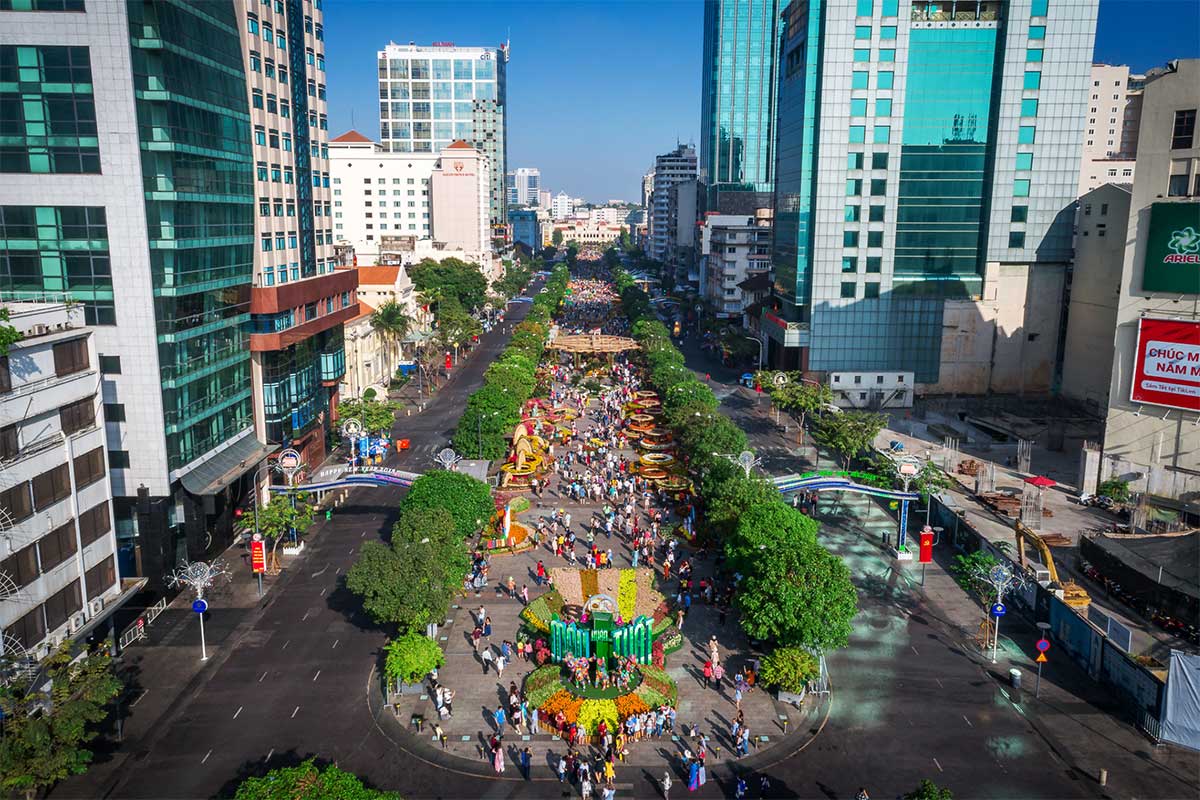
Located in downtown Saigon, the building was formerly the Norodom Palace where Indochinese French Governor-General resided during the mid 19th and early 20th centuries. The original, first built in 1868, was handed over to Saigon Authorities headed by President Ngo Dinh Diem after the 1954 Geneva Accord and served as his official residence. In 1962, two pilots of South Vietnamese Air Force who were much disaffected by the Ngo family regime bombed and partially destroyed the building. A new palace was designed and rebuilt on the same site, and the construction was finished in 1966. Its main gates were torn down on April 30th, 1975. The building was then renamed the Reunification Palace and is now reserved for governmental receptions, international seminars and exhibitions and tourist site alike.
Built in 1929 and originally named Blanchard de la Brosse, it was once known as the Saigon National Museum. Located just within the entrance of the Botanical and Zoological Gardens, the History Museum now contains an excellent collection of artifacts illustrating the physical and chronological evolution of Vietnamese cultures from Prehistoric to the end of Nguyen Dydasty in Vietnam.

Recently rebuilt on the same site of the original Buddhist pagoda and later French outpost, the museum now displays photographs of war atrocities committed during the Vietnam war, tanks, airplanes, infantry weapons and even a copy of “tiger cage” prison first introduced since the French colonial period.
This Taoist pagoda is located at 73 Mai Thi Luu Street, District 1, built by the Chinese community in 1909. It impresses visitors by big colorful painted statues and the wooden carved paintings of hells. President Barack Obama paid a visit to the pagoda during his state trip to Vietnam on 22 May 2016.

Saigon port is one of the biggest river ports in Vietnam where ships of 50,000 tons can call in for business and tourism. The port has become busy in the late 17th century when the city was first established, of course at that time it was much smaller. This is the original commercial port of Saigon located on the Saigon River. The Dragon house was completed in 1863 at the junction of the Saigon River in District 4. On June 5, 1911, Ho Chi Minh (at the time named Nguyen Tat Thanh) departed from the Dragon Wharf on the French ship Admiral Latouche Treville for a 30-year journey around the world looking for a way of national salvation. Therefore, in 1979, the old building of the commercial port has been converted to use as the museum in memorial of President Ho Chi Minh.
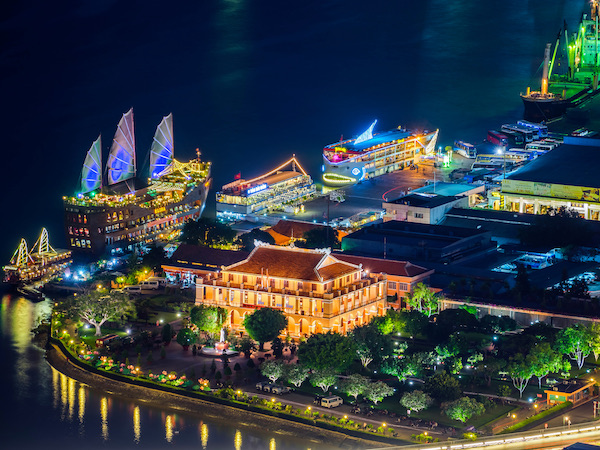
This is the must-go for those who loves arts. It is the major art museum of the city and second in the country only to the Vietnam National Museum of Fine Arts in Hanoi. The museum houses a collection featuring Vietnamese art works in sculpture, oil, silk painting and lacquer painting, as well as traditional styles including woodcut paintings in the Hàng Trống, Đông Hồ, and Kim Hoàng styles, as well as Vietnamese ceramics and a collection of ancient Buddhist art.
It is a pagoda built in Vietnamese traditional Northern architecture style but with concrete. The highest structure in this pagoda is the precious seven-storey tower. This pagoda houses a lot of Buddhist teachings for monks all over.
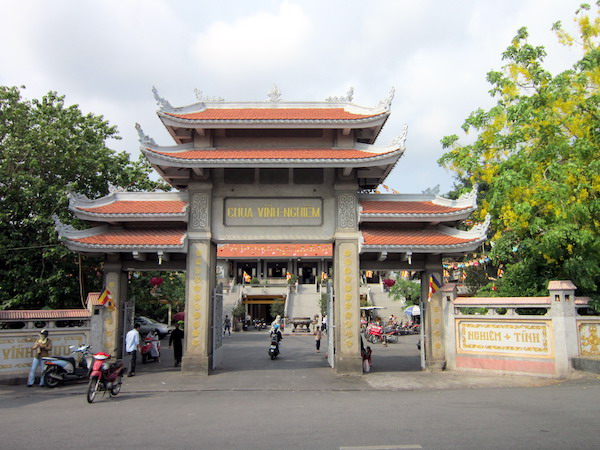
This skyscraper is the symbol of the modern Ho Chi Minh city. Inaugurated in October 2010, it became the tallest building in the city with 68 floors reaching 262.5 metres (861 ft). The tower is owned by Bitexco Group, a Vietnamese multi-industry corporation, with a focus on real estate development. The tower was designed in the unique shape from Vietnam’s national flower, the Lotus.
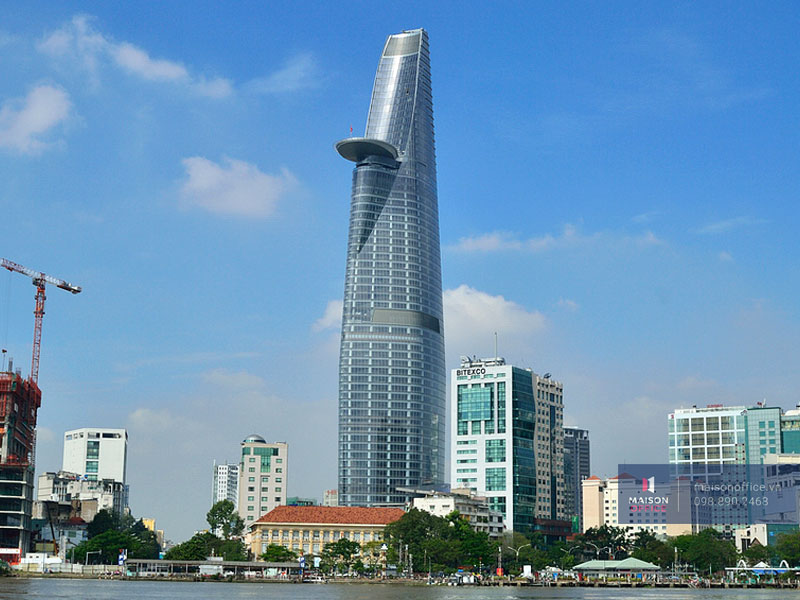
The name Cholon literally means ‘big market’ and refers to District 5 where Chinese immigrants traditionally settled. Today, half a million Chinese-Vietnamese citizens here play essential role in most of the city‘s business and industry.
Traditionally, Chinese people tend to live into congregations and gather around their own communal houses to help each other. In Ho Chi Minh City, there are more than half a million Chinese of different congregations such as Cantonese, Fujian, Chaozhou, Hainanese and Hakka. They all build temples to worship their gods or goddesses such as Thien Hau (the goddess of the sea), Guan Gong (the deified Chinese general well-known for his bravery and loyalty), Ong Bon (the guardian spirit of happiness and virtue). Some famous Chinese temples here include Thien Hau Temple (Chua Ba), Nghia An Hoi Quan (Chua Ong), Ong Bon Temple.
This oldest richly decorated Chinese temple was built by Cantonese Congregation at the end of the 18th century and dedicated to the Heavenly Lady (locally called Thien Hau), who was supposed to be the protector of the fishermen and seafarers. Among the other altars is one (locally called Long Mau) dedicated to the protection of women and newborns and yet another (locally called Kim Hue) to sterile women and mothers who have no sons. Incense coils, ceramic figurines, richly attired statues, and a model boat commemorating the arrival of the first Chinese from Canton are among the items of interest here.
.jpg)
Binh Tay, with a wonderful array of noises, smells and colors, is one of the most colorful and exciting markets in Cholon. First built in 1928 by a Chinese merchant Quach Dam, this is now the marketplace for wholesalers throughout the city.
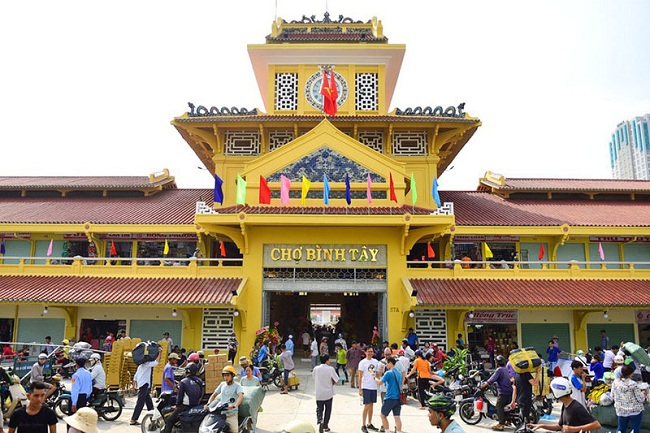
Ho Chi Minh City, formerly known as Saigon, once “The Pearl of the Far East” is the second largest city in Vietnam (the largest being Hanoi). It is the most crowded city in the country with the official population of over 8 million people on the total area of over 2,095 km2. The city now comprises 19 districts and 5 suburban districts. District 1, along the Saigon River, where downtown Saigon is located, is the commercial center and contains most of the city’s monuments and landmarks. 8 km away in district 5 resides a big market or Cho Lon where Chinese community lives. With favorable weather the whole year round and the convenient access from other countries by air, by road and by sea, Ho Chi Minh city is a busy and dynamic metropolitan.

First established in 1698 and considered as an administrative unit under the Nguyen Dynasty, Saigon Gia Dinh attracted people from all over the country coming here to reclaim the land and settle. Later during the mid and late 19th century it became the principal city of Cochin China under the French rule. Then Saigon served as the capital city of South Vietnam from 1956 to 1975 till the unification of the country. Today, the city has emerged as the center of commerce, economy, education, science and technology, health care and tourism of Vietnam.
Traditionally, Vietnamese people follow the family structure of many generations in the same roof. The practice, however, becomes less popular in big cities like Ho Chi Minh City. Most families in Ho Chi Minh City are now nuclear ones with only parents living with the children. Both husbands and wives go to work, leaving their children either in kindergartens or at grandparents’ home so that grandparents can help look after their children. A lot of Vietnamese people are Buddhists or practice the philosophy of Buddhism in life. Public transport has been recently improved for people to use. However, the majority still prefers using their own vehicles, mostly motorbikes to get to work.
The economy of Ho Chi Minh City now contribute for one third of the country’s GDP. The city is fast in industrialization. The main light industries here include textiles and garments, footwear, plastics, food processing, electricity, automobiles, electronics, computers, rubber tires and mechanical products; handicrafts such as embroideries, bamboo and rattan wares, lacquer wares. Tourism also plays a very important role in the city economy. In 2017, Viet Nam received more than 3.5 million foreign tourists and more than half of that came to Ho Chi Minh City.

Vietnam in general has a fairly complete education system ranging from kindergarten to tertiary schooling levels. Children aged from 3 to 6 are encouraged to join kindergartens; those aged from 6 to 15 must go to primary and junior secondary schools on the basic of the compulsory education. After finishing these levels, they can go either to vocational schools or to senior high schools and universities for further education. Ho Chi Minh City is one of the first to complete this compulsory education among the children. Besides, there are also many international schools that provide more opportunities for students to join either locally or abroad. As for medical care system, Vietnam has a nationwide network of health care from the central and provincial to commune levels. Medical insurance is compulsory for all those who work for organization and enterprises which can cover partly or all the hospitalizing cost. The self-employed pay for voluntary medical insurance to get the same benefits or go to private hospitals or clinics
Saigon was designed during the French colonial time and built up a lot more during the American time and recently during the “doi moi” period, but quite a few French colonial-style public buildings are still there. At the intersection of Le Loi and Nguyen Hue Boulevard is the most famous Hotel de Ville (City Hall). Along Dong Khoi Street in District 1 stand such famous buildings as Notre Dame Cathedral, General Post Office, Opera House, Continental Hotel. At the waterfront, the banks, the customs houses line up looking out to the river. To preserve the old structures, the city has been planned and expanded with new modern urban areas in district 2 and district 7 to meet with the development and to house growing inhabitants. Alongside with the colonial structures, sky scrapers can be seen here and there marking the modern life of this city.

Built in 1909 and known as Hotel de Ville, the building with its ornate façade and its elegant interior lit with crystal chandeliers is one of the city ‘s most prominent landmarks and is now the office of Ho Chi Minh City People ‘s Committee.

First built in 1899 as a theater for French troupes’ performances, the building then served as the seat of South Vietnamese National Assembly in the late 1950’s. The theater has been renovated in its original architecture and used for Vietnamese variety shows ranging from traditional music, orchestral performances, fashion shows to symphonies and operas.

The Cathedral was built between 1877 and 1880 on the site of the former Citadel‘s arsenal. The façade is made of red brick in the Neo-Romanesque style and is framed by two square belfries of 40 meters high. A statue of Virgin Maria with the height of 4.2 meters was erected later. You can see communion celebrated here two times a weekday and four times on Sunday.
Located on the east side of the square in front of the Cathedral, it was built between 1886 and 1891 in European style architecture with a great glass and ironwork dome. A huge mural of the map of Saigon was added at the beginning of the 20th century.
This large covered central market together with Binh Tay Market in Cholon is the largest in Saigon. Ben Thanh market was completed in 1914 at the intersection of Le Loi, Ham Nghi and Tran Hung Dao Boulevards. All kinds of products and services are available here every day from 06:00 A.M. to 06:00 P.M. Night market is on both sides of the market, busy from 6 pm till very late at night.

Nguyen Hue Walking Road is the most beautiful and largest road in Ho Chi Minh City with colorful decoration and modern water fountain system. This is considered the heart of District 1. Nguyen Hue walking Road runs from the People’s Committee Building of Ho Chi Minh City to the Saigon River. The present reconstruction was finished on 30 April 2015 at the 40th anniversary of the Reunification of Vietnam and soon becomes the hub of the city. The area of President Ho Chi Minh Statue Park is set Uncle Ho’s copper alloy statue with the height of 7.2m, facing to Sai Gon River. Nguyen Hue Walking Street is the place to organize parades, meetings, street and flower festivals, exhibitions, culture and sports activities, art performances… of Ho Chi Minh City. The walking zone has two lanes for transportation circulation. In the center, it is the During TET, various flower exhibitions and displays are highlight the area.

Located in downtown Saigon, the building was formerly the Norodom Palace where Indochinese French Governor-General resided during the mid 19th and early 20th centuries. The original, first built in 1868, was handed over to Saigon Authorities headed by President Ngo Dinh Diem after the 1954 Geneva Accord and served as his official residence. In 1962, two pilots of South Vietnamese Air Force who were much disaffected by the Ngo family regime bombed and partially destroyed the building. A new palace was designed and rebuilt on the same site, and the construction was finished in 1966. Its main gates were torn down on April 30th, 1975. The building was then renamed the Reunification Palace and is now reserved for governmental receptions, international seminars and exhibitions and tourist site alike.
Built in 1929 and originally named Blanchard de la Brosse, it was once known as the Saigon National Museum. Located just within the entrance of the Botanical and Zoological Gardens, the History Museum now contains an excellent collection of artifacts illustrating the physical and chronological evolution of Vietnamese cultures from Prehistoric to the end of Nguyen Dydasty in Vietnam.

Recently rebuilt on the same site of the original Buddhist pagoda and later French outpost, the museum now displays photographs of war atrocities committed during the Vietnam war, tanks, airplanes, infantry weapons and even a copy of “tiger cage” prison first introduced since the French colonial period.
This Taoist pagoda is located at 73 Mai Thi Luu Street, District 1, built by the Chinese community in 1909. It impresses visitors by big colorful painted statues and the wooden carved paintings of hells. President Barack Obama paid a visit to the pagoda during his state trip to Vietnam on 22 May 2016.

Saigon port is one of the biggest river ports in Vietnam where ships of 50,000 tons can call in for business and tourism. The port has become busy in the late 17th century when the city was first established, of course at that time it was much smaller. This is the original commercial port of Saigon located on the Saigon River. The Dragon house was completed in 1863 at the junction of the Saigon River in District 4. On June 5, 1911, Ho Chi Minh (at the time named Nguyen Tat Thanh) departed from the Dragon Wharf on the French ship Admiral Latouche Treville for a 30-year journey around the world looking for a way of national salvation. Therefore, in 1979, the old building of the commercial port has been converted to use as the museum in memorial of President Ho Chi Minh.

This is the must-go for those who loves arts. It is the major art museum of the city and second in the country only to the Vietnam National Museum of Fine Arts in Hanoi. The museum houses a collection featuring Vietnamese art works in sculpture, oil, silk painting and lacquer painting, as well as traditional styles including woodcut paintings in the Hàng Trống, Đông Hồ, and Kim Hoàng styles, as well as Vietnamese ceramics and a collection of ancient Buddhist art.
It is a pagoda built in Vietnamese traditional Northern architecture style but with concrete. The highest structure in this pagoda is the precious seven-storey tower. This pagoda houses a lot of Buddhist teachings for monks all over.

This skyscraper is the symbol of the modern Ho Chi Minh city. Inaugurated in October 2010, it became the tallest building in the city with 68 floors reaching 262.5 metres (861 ft). The tower is owned by Bitexco Group, a Vietnamese multi-industry corporation, with a focus on real estate development. The tower was designed in the unique shape from Vietnam’s national flower, the Lotus.

The name Cholon literally means ‘big market’ and refers to District 5 where Chinese immigrants traditionally settled. Today, half a million Chinese-Vietnamese citizens here play essential role in most of the city‘s business and industry.
Traditionally, Chinese people tend to live into congregations and gather around their own communal houses to help each other. In Ho Chi Minh City, there are more than half a million Chinese of different congregations such as Cantonese, Fujian, Chaozhou, Hainanese and Hakka. They all build temples to worship their gods or goddesses such as Thien Hau (the goddess of the sea), Guan Gong (the deified Chinese general well-known for his bravery and loyalty), Ong Bon (the guardian spirit of happiness and virtue). Some famous Chinese temples here include Thien Hau Temple (Chua Ba), Nghia An Hoi Quan (Chua Ong), Ong Bon Temple.
This oldest richly decorated Chinese temple was built by Cantonese Congregation at the end of the 18th century and dedicated to the Heavenly Lady (locally called Thien Hau), who was supposed to be the protector of the fishermen and seafarers. Among the other altars is one (locally called Long Mau) dedicated to the protection of women and newborns and yet another (locally called Kim Hue) to sterile women and mothers who have no sons. Incense coils, ceramic figurines, richly attired statues, and a model boat commemorating the arrival of the first Chinese from Canton are among the items of interest here.
.jpg)
Binh Tay, with a wonderful array of noises, smells and colors, is one of the most colorful and exciting markets in Cholon. First built in 1928 by a Chinese merchant Quach Dam, this is now the marketplace for wholesalers throughout the city.

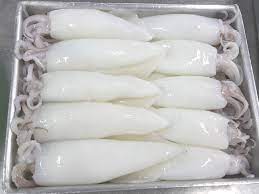
Hot product frozen squid cleaned for export
0 reviews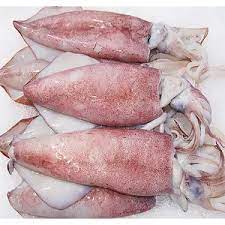
Cheap price frozen needle squid cleaned from
0 reviews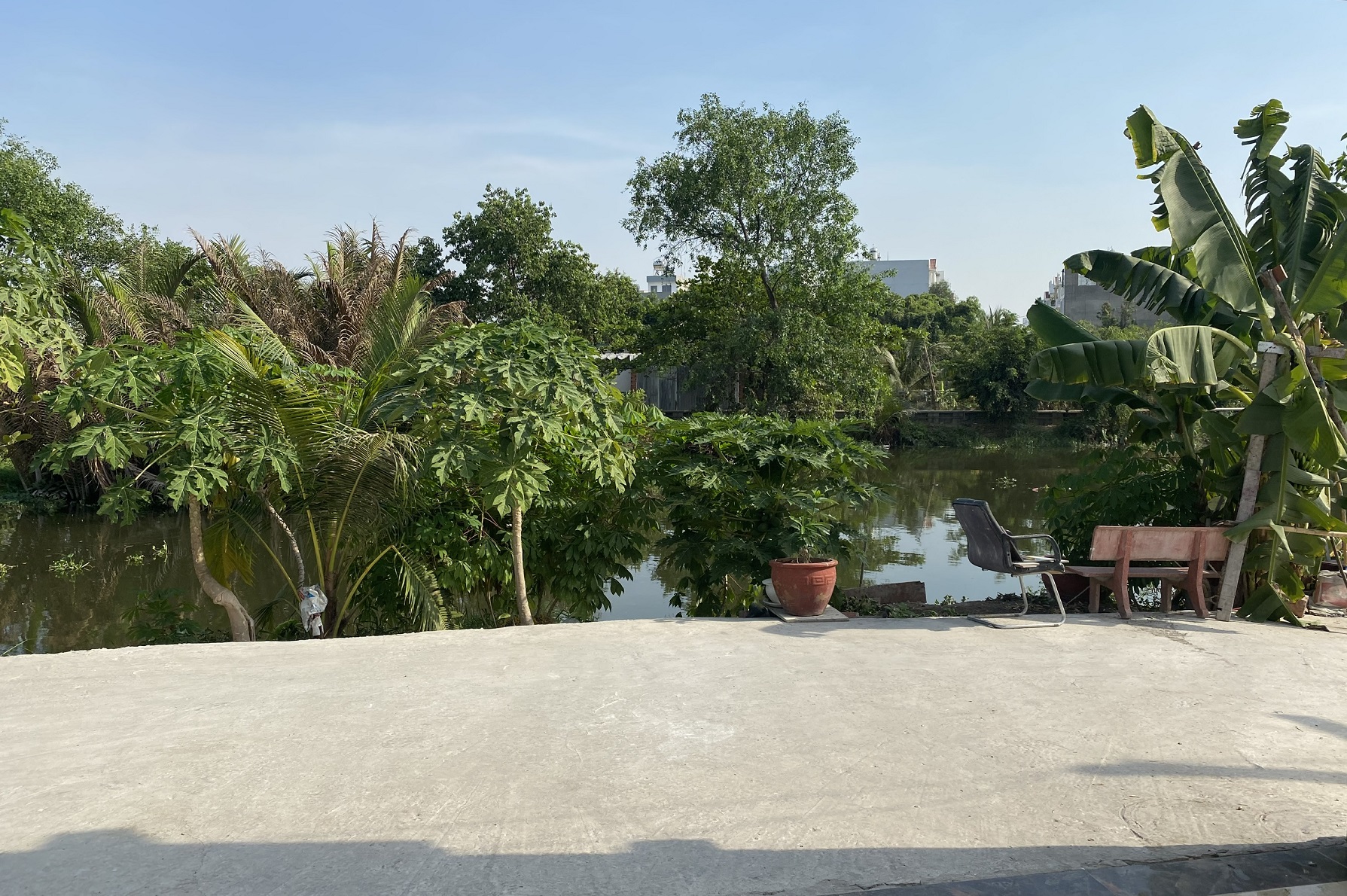
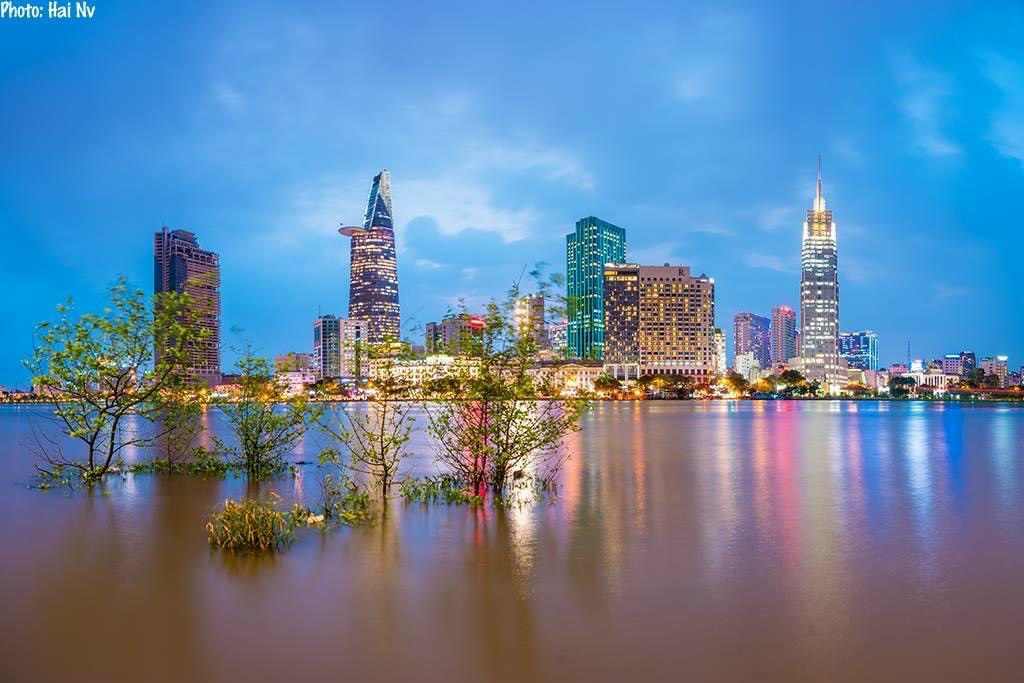
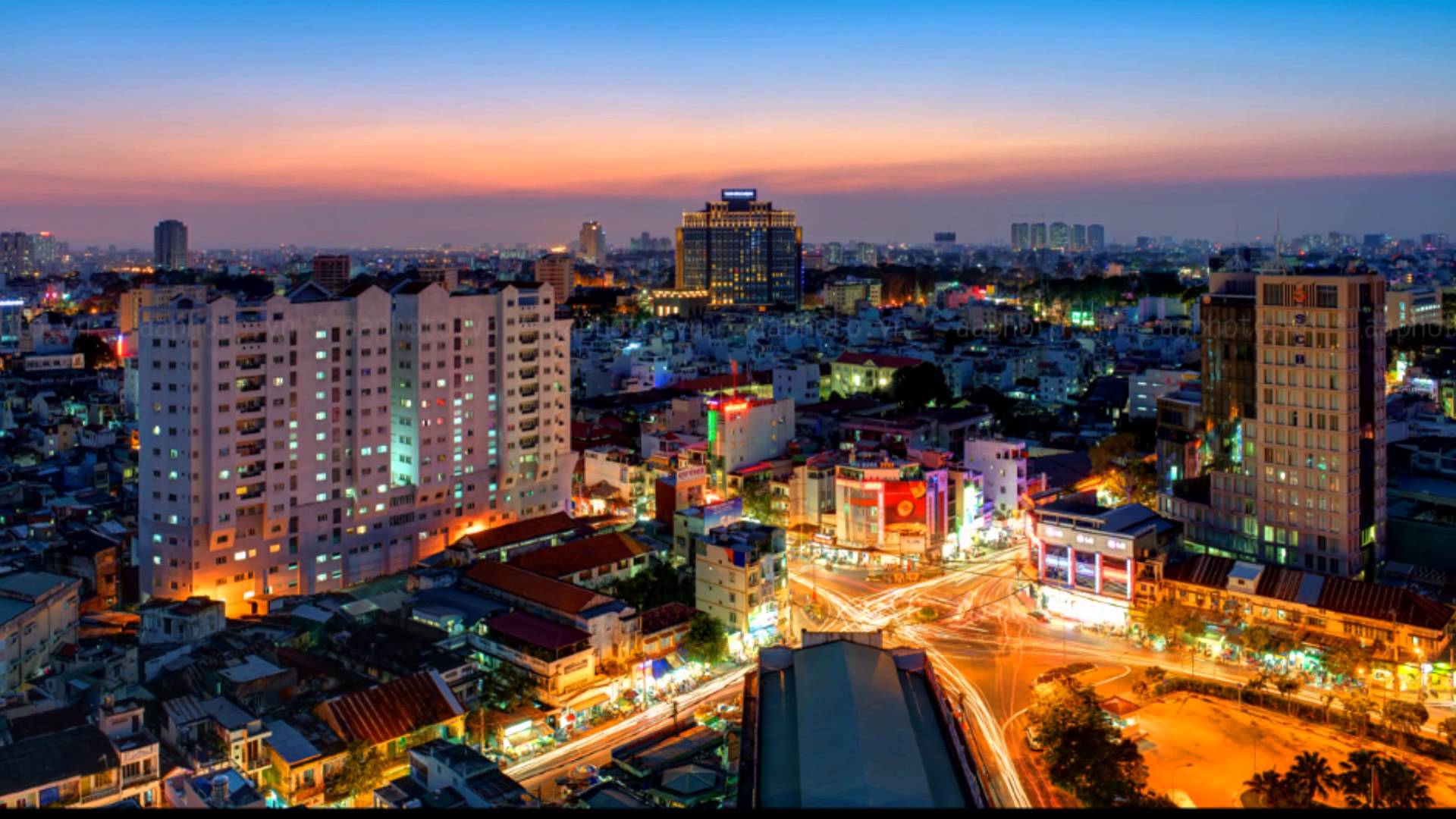
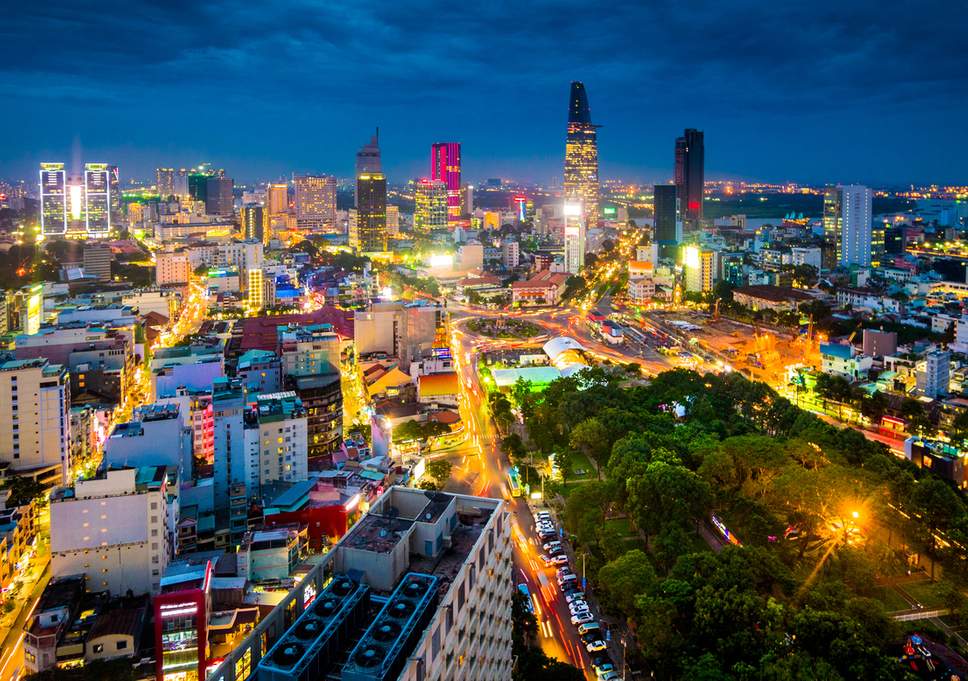
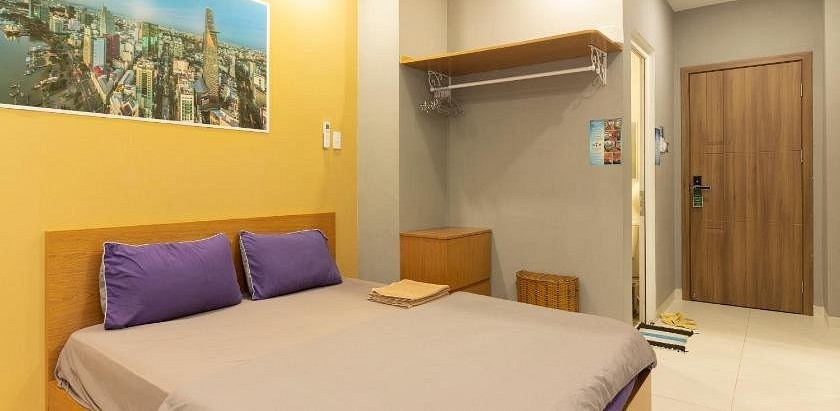
Pham Ngu Lao Center Chill House
0 reviews District 1, Ho Chi Minh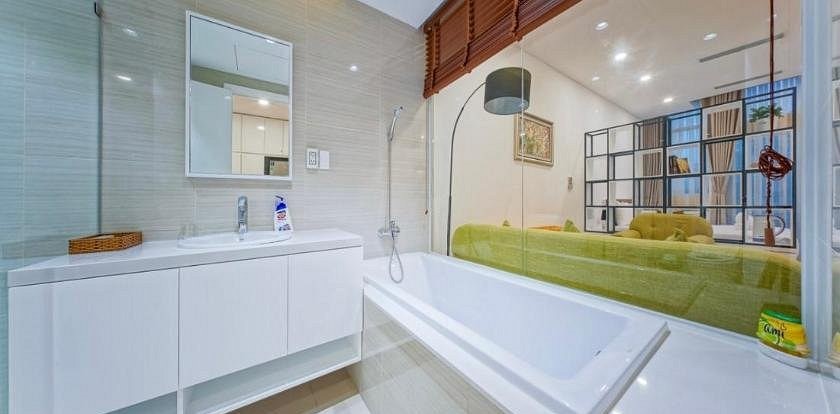
Ben Thanh Tower - Soho Apartment
0 reviews District 1, Ho Chi Minh
The Palmian City Center Serviced Apartment
0 reviews Phu Nhuan District, Ho Chi Minh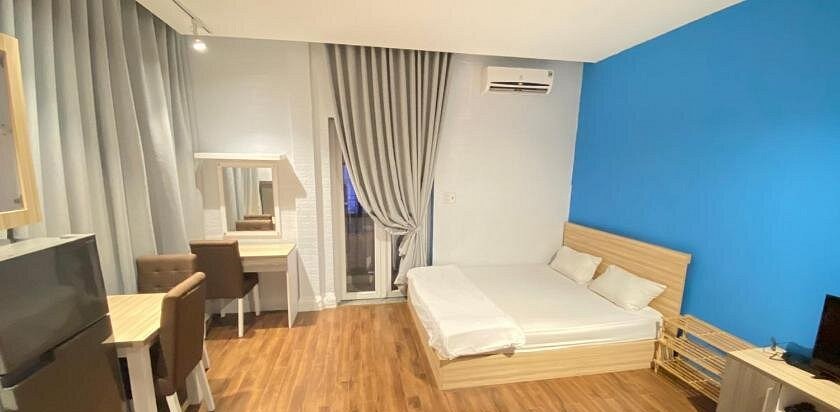
Airport Saigonsweethome Apartment
0 reviews Tan Binh District, Ho Chi Minh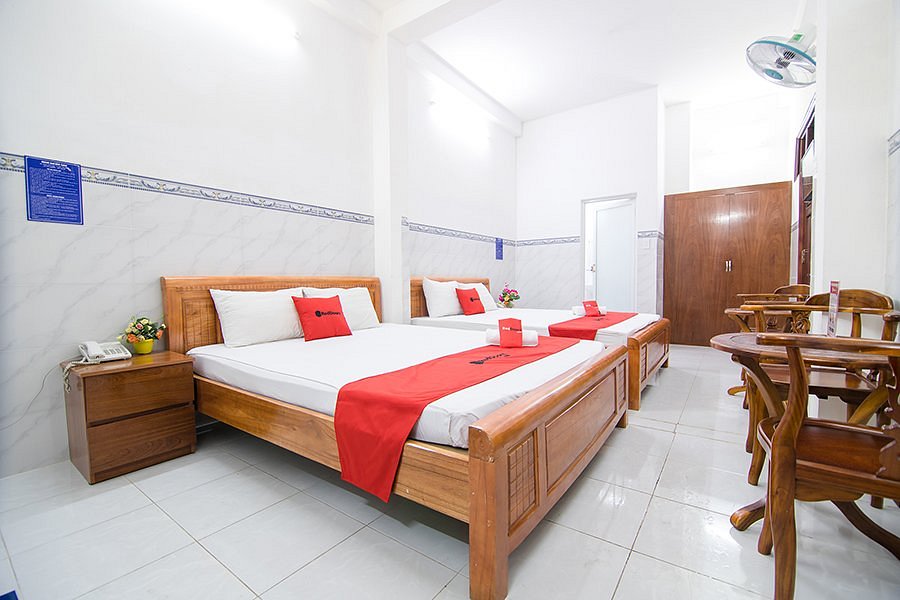
RedDoorz near Bau Cat Residence
0 reviews Tan Phu District, Ho Chi Minh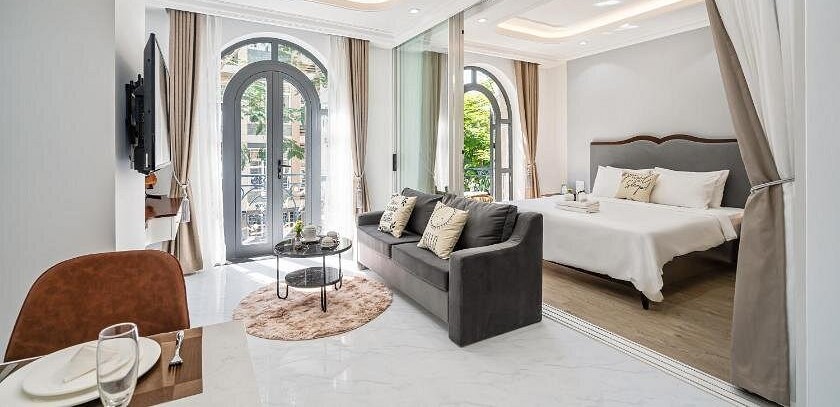
The Royal Homies - Phu My Hung
0 reviews District 7, Ho Chi MinhVietnam Search Co.,Ltd
Head Office: SGCC Tower, 778 Xo Viet Nghe Tinh St, 25 Ward, Binh Thanh Dist, HCM City, Vietnam
Tel: + 84 947 170 170 ( Zalo/ WhatsApp/ Viber )
Email: contact@vietnamsearch.com
Places to go
Restaurant
Hotel
Transport
Local Products
Local Products
All